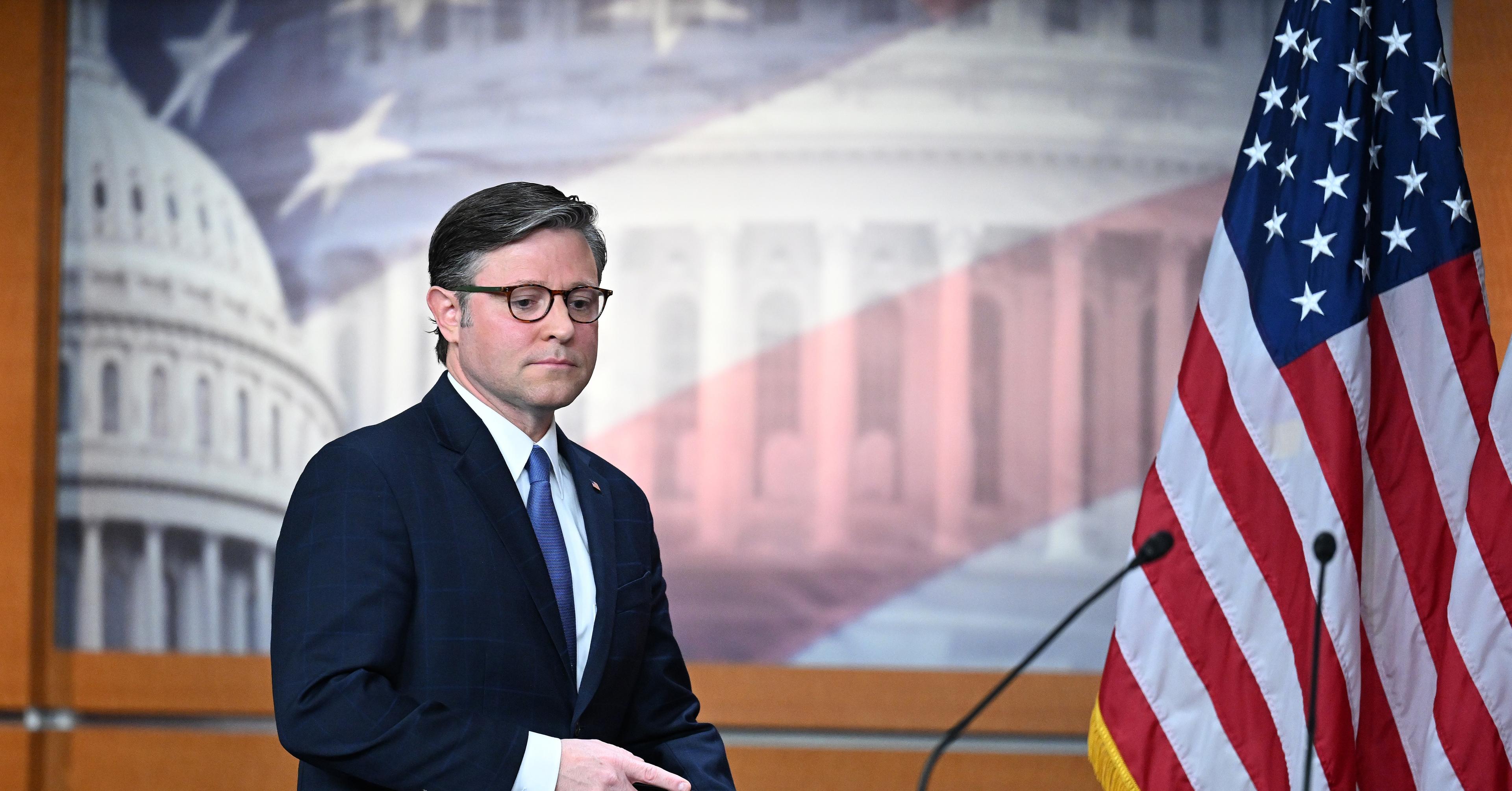Kamala Harris has reportedly narrowed her list of potential running mates down to three: Minnesota Gov. Tim Walz, Arizona Sen. Mark Kelly, and Pennsylvania Gov. Josh Shapiro. All these contenders have their upsides. Walz is a Midwestern veteran who plays a gr…

Published a year ago on Aug 2nd 2024, 12:00 pm
By Web Desk

Kamala Harris has reportedly narrowed her list of potential running mates down to three: Minnesota Gov. Tim Walz, Arizona Sen. Mark Kelly, and Pennsylvania Gov. Josh Shapiro. All these contenders have their upsides. Walz is a Midwestern veteran who plays a great no-nonsense, folksy dad on TV and repeatedly won a Republican-leaning, rural congressional district before becoming governor. Kelly is a border hawk whose ascension to the Democratic ticket could theoretically mitigate Harris’s vulnerability on immigration. Plus, he’s been to space. Nevertheless, a glance at the Electoral College map might lead one to believe that Shapiro is the obvious choice. Right now, Harris is polling a bit worse in Pennsylvania than in the other key Rust Belt battlegrounds. The likely Democratic nominee trails Trump by 1.9 points there, while losing by only 1 point in Michigan and 0.7 points in Wisconsin, according to RealClearPolitics’s polling average. Close the gap in Pennsylvania, and Harris will be in striking distance of sweeping the three Midwestern swing states, which could be sufficient to win her the White House. What’s more, Pennsylvania holds four more Electoral College votes than Michigan and nine more than Wisconsin. As long as Democrats win Pennsylvania, they can lose both of those states and still retain some other plausible routes to victory. With Pennsylvania in her corner, Harris could lose Nevada, Michigan, and Wisconsin and still get just over 270 Electoral College votes by taking Georgia and Arizona. Given this math, it may seem like a no-brainer to pick the governor who boasts a 60 percent approval rating in the single most valuable battleground state. But there is one flaw in this reasoning: There is virtually no evidence that picking a vice presidential candidate from any particular state actually increases a party’s support in that state. Shapiro might nonetheless be Harris’s best option. And it’s conceivable that he could marginally improve her support in Pennsylvania. But if he did, he’d be an exception to the rule. Harris would be well-advised to give more weight to other considerations when making her selection. The weak, complicated case for believing that running mates help deliver their home states Some research has found that vice presidential candidates do enjoy a “home-state advantage.” But these analyses generally rest on faulty premises. For years, most studies suggested that presidential candidates do not enjoy any advantage in their running mate’s home state. In 2016, the political scientists Boris Heersink and Brenton Peterson published a paper that challenged this consensus. Conventionally, political scientists had gauged a running mate’s home-state advantage by considering 1) the national vote in a given election and 2) how a vice presidential candidate’s home state had voted on average in the five preceding elections. With these two data points, they estimated how that state should have voted in a given election, considering its historical leanings and that year’s national environment, and then compared this estimate with how it actually voted. If a presidential candidate outperformed their expected share of the vote in their running mate’s home state, then one could plausibly conclude that they enjoyed an advantage there. Heersink and Peterson argue that there is one big problem with this reasoning: Political parties tend to choose vice presidential candidates from places where they are already losing ground due to structural political changes. They highlight the example of John F. Kennedy’s selection of Lyndon Johnson in 1960. Over the previous five elections, the Democratic Party’s support in LBJ’s home state of Texas had been in sharp decline, as Republicans steadily ate into the New Deal coalition. In 1940, Franklin Delano Roosevelt won 81 percent of the state’s votes; four years later, he took 71 percent. With those two landslides propping up the Democratic Party’s average historical support in Texas, Kennedy was all but certain to do worse than expected in the Lone Star State, no matter whom he chose as his running mate. The traditional formula for calculating home-state advantage missed this fact. Instead, it suggested that choosing LBJ actually reduced Kennedy’s support in Texas by 15 points. Heersink and Peterson found this implausible. They insisted that a vice presidential candidate’s home state is much more likely to be trending away from that candidate’s party than the nation as a whole. Therefore, to capture a running mate’s true home-state advantage, you need to compare their home state’s voting behavior with that of the same exact state in an alternate dimension with a different vice presidential nominee who came from somewhere else. Lacking the budget for interdimensional travel, the researchers settled for the next best thing. By cobbling together bits and pieces of other US states, they created a “synthetic” Texas: A group of geographic areas that had collectively voted the same way that Texas had in 1952 and 1956. Comparing 1960’s election results in this Frankensteinian pseudo-Texas to actual Texas, they found that LBJ’s selection likely increased Kennedy’s margin in the Lone Star State. Applying this method to all US elections between 1844 and 2012, they found that vice presidential candidates boosted their ticket’s support in their home states by an average of 2.67 percent — more than enough to potentially swing the result of an election. Why picking Josh Shapiro might not help Harris much in Pennsylvania If Heersink and Peterson’s findings are correct, then a ton of Democratic and Republican consultants need to get fired. In recent elections, neither party’s presidential nominee has chosen a running mate from the most hotly contested swing state. They’ve tended to pick politicians from completely uncompetitive states: George W. Bush picked Dick Cheney from deep red Wyoming, Obama tapped Biden from safe blue Delaware, Trump selected Mike Pence from solidly Republican (except for immediately after a financial crash) Indiana, and Biden chose Harris from the coastal Gomorrah of California. If all of these nominees could have bought themselves a significant boost in a pivotal swing state simply by choosing a different running mate, then their top advisers should never work in politics again. The thing is, there is reason to think that Heersink and Peterson’s paper is wrong. In 2019, the political scientists Christopher J. Devine and Kyle Kopko published a study that reaffirmed the original conventional wisdom: Running mates don’t meaningfully increase a ticket’s support in their home states. Devine and Kopko’s research directly rebuts Heersink and Peterson’s, noting two major flaws: First, its core premise — that parties tend to pick vice presidential candidates from states where they’re losing ground — is not true and was based on a technical error in their research. In 1948, a faction of southern Democrats split with the national party in protest of President Harry Truman’s embrace of civil rights. These Dixiecrats put forward their own, alternative Democratic nominee, South Carolina Gov. Strom Thurmond. Alabama chose to leave Truman off of the state’s ballot and listed Thurmond as the Democratic presidential nominee in his stead. As a result, the Democratic Party’s actual nominee won no votes in Alabama that year. Heersink and Peterson code this as a 100-point Republican victory in Alabama, since they don’t recognize Thurmond as the Democratic nominee. And this dubious decision matters for the rest of their paper since, in 1952, the Democrats’ vice presidential candidate was from Alabama. In fact, the idea that parties generally pick VP nominees from places where they’re losing ground is based entirely on the alleged fact that 1952 Democratic standard-bearer Adlai Stevenson picked a running mate from a state that his party had lost by 100 points four years earlier. Take that result out of Heersink and Peterson’s averages and the trend completely disappears. The second problem with their paper is that its results are based entirely on the voting behavior of geographic areas rather than people. Data on shifts in a region’s aggregate political leanings have their uses, but information about individuals’ voting preferences is generally better for gauging the influence of any given factor on election outcomes. This is partly because the population of an area can change between election cycles. For example, a state can gradually lose college-educated voters if other areas offer better job opportunities for young professionals. Thus, if you compare a state’s voting behavior in one election to its behavior in a later one, you might mistake the impact of a demographic shift for the impact of a specific campaign decision, such as the selection of a running mate from that state. Using large-scale survey data on individuals from all 50 states, Devine and Kopko are able to gauge the impact of running mate decisions on voters. They find that, after controlling for all other relevant variables (e.g., partisanship, race, age, gender, income, etc.), voters from the same state as a party’s vice presidential nominee are no more likely to support that party than voters from other states. This finding does not prove that Heersink and Peterson’s paper was entirely wrong. Although some of that study’s criticisms of the conventional formula for assessing home-state advantage were faulty, others were apt. Specifically, Heersink and Peterson correctly noted that gauging a state’s partisanship using the previous five elections was liable to throw off estimates of “expected” vote share, since party coalitions can flip dramatically in the space of 20 years. Further, Devine and Kopko did not demonstrate that there was any technical error or absurd conceptual premise in Heersink and Peterson’s approach to measuring home-state advantage. But the former’s work did show that the latter’s findings are inconsistent with individual-level survey data. And it is probably safer to make causal inferences from such data than it is to do so using state-level figures. Shapiro might be the right choice, but Harris shouldn’t pick him for the wrong reasons None of this necessarily means that Harris shouldn’t pick Shapiro. The Pennsylvania governor does have some liabilities. His unusually strident criticisms of pro-Palestinian protesters have earned him the enmity of some progressives, while the uncanny similarity between his oratorical style and Barack Obama’s could be offputting to some voters. Nevertheless, by picking Shapiro, Harris could plausibly counter the widespread perception that she is very left-wing, which may be a source of concern for some swing voters. And the qualities that have enabled the Pennsylvania governor to earn a 60 percent approval rating in his home state might help him win the confidence of a national electorate. It also remains conceivable that Shapiro could help Harris a bit in Pennsylvania. The empirical evidence may strongly suggest that a running mate’s home state doesn’t matter, but there are no infallible measurement tools in social science. Survey data can be biased, and not at all relevant variables can be identified and controlled. More critically, as noted above, it’s been decades since the nominee of either party actually tried putting the popular incumbent governor of a hotly contested swing state on the ticket. So the historical data might not be a reliable guide to the implications of picking Shapiro. There are also some reasons to think that Harris’s VP pick will matter more than most: In some recent polls, Harris’s favorability has jumped dramatically in recent weeks, a development that suggests voters’ impressions of her are unusually unsettled. Since her choice of running mate will be the first major decision she makes as presumptive Democratic nominee, it could solidify many voters’ views of her candidacy. Shapiro’s selection could plausibly reassure some Pennsylvania swing voters that Harris is the type of Democrat they can trust. Still, Harris should not count on that. Although it is possible that Shapiro could help her win Pennsylvania, the historical record indicates that this is far from a sure thing. For that reason, if Harris believes that Walz or Kelly would play better to a national audience, she should not pick Shapiro merely because he’s from a more valuable state. Update, July 31, 4 pm ET: This story was originally published on July 31 and has been updated to include more information on the Heersink and Peterson paper.
Sabalenka named WTA Player of the Year for second straight season
- 5 hours ago
Bondi gunman’s Indian family had no knowledge of his radicalisation, Indian police say
- 5 hours ago

Gold prices dip per tola in Pakistan, global markets
- 5 hours ago
AI boom seen lifting chipmaking equipment sales 9pc to $126bn in 2026
- 2 hours ago

Assailants kill cop, brother in gun attack in KP’s Lakki Marwat
- 2 hours ago
Tagic Army Public School (APS) Peshawar incident completes 11 painful years
- 39 minutes ago

Young Leaders Conference 2025 highlights social stewardship on day two
- 2 hours ago

Why Republicans in Congress are turning against Trump
- 17 hours ago

Zillow’s short-sighted move to overlook climate risk
- 8 hours ago
Bollywood studio Bhansali Productions to sell future film music to Saregama India
- 5 hours ago
Former Punjab CM Manzoor Wattoo passes away at 86
- 5 hours ago
Pakistan qualify for semi-final of under 19 Asia Cup cricket
- 2 hours ago
You May Like
Trending




